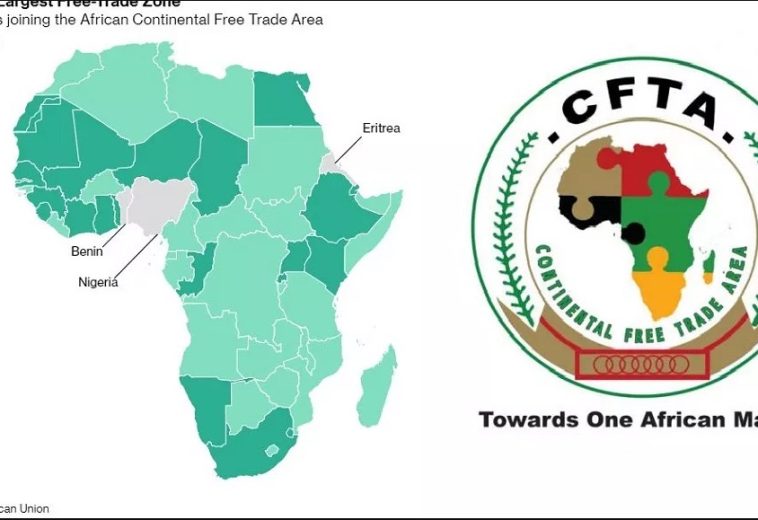The African continent is the world’s second-largest, accounting for roughly one-fifth of the total land surface. Its total land area is approximately 11,724,000 square miles (30,365,000 square km), and the continent measures about 5,000 miles (8,000 km) north to south and about 4,600 miles (7,400 km) east to west.
According to the United Nations, it is home to about 30 percent of the world’s mineral reserves, 12 percent of the world’s oil reserves, and 8 percent of the world’s natural gas reserves. Furthermore, it agrees that natural capital here accounts for between 30 and 50 percent of total wealth in most African countries. Also, more than 70% of people in Sub-Saharan Africa rely on forests and woodlands. For this reason, land is a socio-cultural resource and an economic development asset.
We cannot underscore that a significant portion of these resources are used in an unsustainable manner. In contrast, others are lost through illegal activities, implying that the stream of benefits generated by these resources is diminishing over time. For example, Africa loses an estimated USD 195 billion in natural capital each year due to illicit financial flows, illegal mining, illegal logging, illegal wildlife trade, unregulated fishing, environmental degradation, and
Otherwise, it is home to a wide variety of natural resources. They include diamonds, gold, oil, natural gas, uranium, platinum, copper, cobalt, iron, bauxite, and cocoa beans. All these are spread in different parts of the continent and influence the global community separately, as elaborated below.
East Africa
In East Africa, national governments have designated large areas as national parks or game reserves, popular tourist destinations. This allows tourists from the global community to choose the region as their destination. Last year alone, the total number of inbound trips added to about 7 million, with the region’s wildlife serving as a key selling point. However, it is also threatened by habitat loss and poaching.
Nairobi National Park in Kenya has a diverse wildlife population that includes four of Africa’s Big Five animals and is designated a lion and rhinoceros sanctuary. It is also one of the few parks where you can see a black rhinoceros in its natural habitat.
Countries such as Tanzania have about 25% of their land designated as a game reserve or national park, including the world’s largest game reserve, the Selous, in southern Tanzania.
Fluorspar, titanium and zirconium, gold, oil, gas, cobalt and nickel, diamonds, copper, coal, and iron ore are among the minerals found in the region.
We cannot underscore the region’s numerous water bodies, including freshwater lakes, rivers, and marine waters; freshwater bodies (lakes and rivers) are rich in biodiversity and can be used for food while creating jobs. Other lakes are also notable because they contain hot springs or are home to rare bird species, such as the flamingo, making them popular tourist destinations.
The coastal marine waters provide food, employment, and a source of foreign exchange. Coastal beaches are a popular tourist destination in both Kenya and Tanzania. Ports such as Mombasa and Dar es Salaam, among others, serve the region and its landlocked neighbours.
Many conservation initiatives have been established in recent years to help conserve and protect the region’s wildlife, as there has been a growing awareness of the need to preserve the region’s wildlife. Looking ahead, this will, in turn, allow more and more tourists to visit and explore the area and move the region’s relationship with Western countries a notch higher.
West Africa
Many of the world’s fastest-growing economies and a rapidly expanding middle-class consumer base are found in West Africa. The United Nations defines Western Africa as the 16 countries of Benin, Burkina Faso, Cape Verde, The Gambia, Ghana, Guinea, Guinea-Bissau, Ivory Coast, Liberia, Mali, Mauritania, Niger, Nigeria, Senegal, Sierra Leone, and Togo, as well as Saint Helena, Ascension, and Tristan da Cunha (UK Overseas Territory).
West Africa is the most significant contributor to the continent’s hydrocarbon future, accounting for nearly 60% of newly discovered reserves by volume. The region’s top three freshly discovered resources, Senegal’s Yakaar-Teranga, Mauritania’s Orca, and Ivory Coast’s Baleine, total 3.6 billion barrels of oil equivalent.
This explains why pan-African industry titans chose the region for the MSGBC Oil, Gas, and Power conference and exhibition at the height of the basin’s gas rush, co-writing a robust future for African energy that develops Africa as more than 50 new offshore blocks come up for bid.
West Africa is the EU’s most important sub-Saharan African trading partner, primarily exporting fuels and food products. Nigeria is a country in Africa with a diverse range of natural resources. Nigeria is rich in natural resources, including precious metals, various stones, and industrial materials such as barites, gypsum, kaolin, and marble. The vast majority of these have yet to be used. This attracts investors from the West to invest in these areas, creating job opportunities.
According to statistics, the level of exploitation of these minerals is shallow compared to the extent of deposits in the country. One of the goals of the new National Policy on Solid Minerals is to ensure the orderly development of the country’s mineral resources.
South Africa
South Africa is abundant in minerals. Aside from diamonds and gold, the country has iron ore, platinum, manganese, chromium, copper, uranium, silver, beryllium, and titanium reserves. There are no commercially exploitable petroleum deposits, but there is some natural gas off the southern coast, and synthetic fuel is made from coal at two large plants in the Free State and Mpumalanga provinces.
Although manufacturing has employed more people and produced a more significant proportion of gross domestic product (GDP) for decades, the mining sector remains at the heart of the South African economy as mining-focused holding companies invest in other economic activity.
Coal is an additional valuable mineral product in South Africa. Large known deposits lie beneath the Mpumalanga and northern Free State Highveld, mostly at easily mined depths. Coal is primarily produced for export (primarily to East Asia and Europe) and power generation.
South Africa is the world’s largest producer of platinum and chromium, mined in northeastern centres such as Rustenburg and Steelpoort and becoming increasingly economically significant. Massive platinum-group deposits and chromium minerals are found primarily north of Pretoria. The Northern Cape province contains most of the primary iron ore and manganese deposits, and titanium-bearing sands are common along the eastern seaboard. In addition, uranium, palladium, nickel, copper, antimony, vanadium, fluorspar, and limestone are produced in the country.
South Africa’s leading international trading partners and other African countries are Germany, the United States, China, Japan, the United Kingdom, and Spain. Corn, diamonds, fruits, gold, metals and minerals, sugar, and wool are among the most important exports. Thus, natural capital accounts for between 30% and 50% of total wealth in most African countries. More than 70% of people in Sub-Saharan Africa rely on forests and woodlands. Land is a socio-cultural resource as well as an economic development asset. Collectively, the continent stands to benefit significantly from pooling and harnessing its vast natural resources to finance the development agenda towards greater prosperity; however, it must also ensure that future growth and resource exploitation are results-oriented, climate-resilient, and sustainable.


